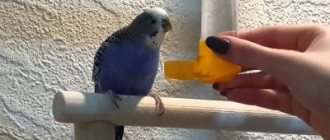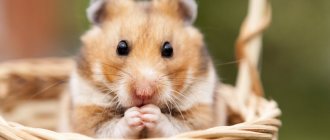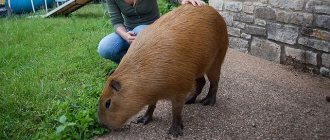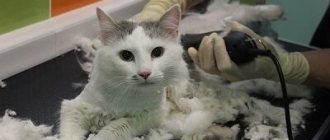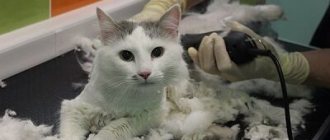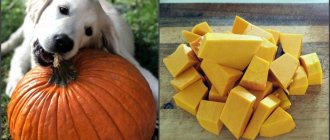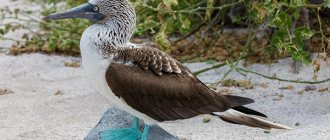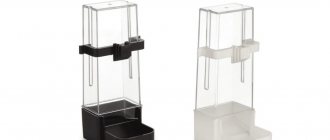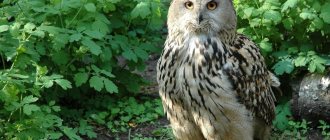- home
- Parrot
- Arrangement
05/18/2019 If you have chosen a parrot as your favorite pet, you need to organize a convenient place for it in your apartment or house. Of course, he will spend most of the day in his crate, so it should have everything you need for your pet's comfort. A perch is one of the most important pieces of “furniture” for a parrot of any species. Nowadays pet stores offer a wide selection of their varieties, but first you need to figure out which one is suitable for your bird.
Types of perches
Sticks for parrots are divided into types, depending on what material they are made of.
Plastic
These are the ones that usually come with a standard set of new cells. Many experts and amateurs criticize them, saying that when domestic birds sit on them for a long time, this is fraught with the appearance of calluses. The latter threaten significant health problems. Some experts advise using plastic props for parrots only temporarily - until a replacement is purchased, or during the period of illness of the pet, when it is necessary to disinfect the place of detention.
Wooden
Produced on an industrial scale. During the production process, the blanks are ground and adjusted to the required size. Very well suited for domestic birds. Some experts advise modifying such perches for parrots. Refinishing consists of eliminating a smooth surface by making cuts and dents using a knife. This is done to imitate a tree branch.
Rubber
Hard rubber is used in production. When purchasing such a perch, you need to look extremely carefully at the quality of the material from which it is made.
Cheap, low quality tires can be hazardous to your parrot's health. This danger is even greater if the manufacturer has used a low-quality dye that releases harmful substances.
Cotton wicker
Their advantages include experienced poultry farmers that they are decorative and environmentally friendly. Cotton is a soft natural material that does not contain harmful impurities and minimizes the risk of accidental damage. However, your pet may start pecking at the cotton.
As a result, there is a chance that he will clog his goiter or simply get his claws tangled in the threads.
Cement, concrete, mineral
A perch made of cement (concrete) can only be used as an additional one. This is due to its significant disadvantages, namely:
- It's cold to sit on it.
- If the bird starts pecking at it, there is a possibility that a piece of concrete will get into the crop, which leads to a great health risk.
Natural minerals, in particular volcanic stone (pumice), are actively used to make perches. Pumice sticks cannot be used as the main resting place for a parrot, as they have disadvantages similar to concrete perches. Their main purpose is to grind down the claws and beak of a pet.
On sale you can find a perch for parrots, sprinkled with fine crumbs of minerals. It can also only be used as an additional place for parrots to stay and for grinding down beaks and claws.
Another variety is perch-nozzles with sand spraying. They are also designed for grinding down claws and beaks. But experienced people warn that on such a perch a bird can wear off not only its claws, but also the soles of its paws, which will lead to health problems.
Which poles should not be used?
Of those that can be found on sale, the most dangerous are plastic, woven threads and concrete (cement), it is better to avoid them. Any perches other than wooden ones are not recommended as main ones.
If you are buying a wooden perch or decide to make one yourself, here is a list of wood species that are hazardous to bird health:
- oak;
- pear;
- bird cherry;
- poplar;
- conifers;
- lilac;
- elder;
- acacia (warning: it is poisonous).
How to make a perch with your own hands
Parrot perches can easily be made by the owner himself. For people who are interested in handicrafts, this is not only a way to save money, but also a way to spend time creatively.
Materials and tools
Most often, home craftsmen make additives for feathered pets from wood.
To make them, you need a wooden blank, a knife or a small file.
There are certain requirements for the workpiece. Firstly, it must be from a wood species approved for parrots. Secondly, the diameter of the bait should be such that the bird can wrap its fingers around 3 quarters of it.
Dangling fingers when sitting is extremely undesirable. The diameter depends on the age and breed of the pet. Perches for young budgies should be 8-10 millimeters thick, for adults 15-18. The optimal thickness of additives for medium species - cockatiels, Senegalese, lorises is from 15 to 30 millimeters. For large ones - Amazons, cockatoos and grays - from 25 to 50 millimeters.
Thirdly, the harvesting must be environmentally friendly.
You should not pick up twigs lying along the roadsides. They absorb all the dirt and dust.
Step-by-step instruction
To make a wooden perch for a parrot with your own hands, you need to follow the following steps sequentially.
- Cut one or more branches of a suitable species.
- Cut the branches into pieces of the required length.
- Rinse them thoroughly with a brush in warm water.
- Place the cubes in cold water for about 2 hours.
- Remove and pour boiling water over it.
- Wipe and dry well.
- At both ends of the block, use a knife to make a small indentation along the entire diameter. The distance from the ends to the recesses should be approximately 1 centimeter.
- Tie strings in the recesses. It is better to make them from natural threads - sisal, cotton, jute.
- Tie the perch to the cage using strings.
There should be no more than three sittings per feathered pet. If there are two birds in the cage, then the perches should not be installed in a position one above the other. In this case, the birds can dirty each other with droppings.
Why do parrots need perches in a cage?
Parrots in their natural environment spend a lot of time sitting on tree branches. A special reflex of the paw helps them in this, thanks to which it reliably clasps the branch without much effort.
The domestic parrot sits on a perch most of the day, which is also called a perch, and sleeps on it at night. The correct choice of this accessory is extremely important for the health of the paws. The fingers should not completely clasp the perch, but lie touching it with the claws. Therefore, you need to take into account the size of your pet: perches for budgies will be smaller than for grays.
When one bird lives in a cage, it needs 2-3 comfortable perches. If there are more inhabitants, then poles will have to be added.
Such an important item
Meanwhile, this attribute, also called a perch, is simply necessary in any cage or aviary where parrots live. After all, it is on the perches that birds spend most of their lives.
Nature has created the wavy's foot in such a way that it can remain on the “perch” for its entire bird life. Evolving, birds living in trees acquired a reflex, thanks to which they manage to securely attach themselves to a branch. And the condition and health of the parrot’s legs will depend on the quality of the perches. Diseases of bird legs are difficult to treat, and therefore it is much more important to prevent their occurrence by equipping the parrot’s home with suitable perches.
How to accustom your feathered pet to being held?
We prepare the material
There are certain rules for preparing twigs for parrot perches.
Where and how?
- We go to the forest for suitable materials. It is necessary to do this away from roads, landfills, and industrial enterprises.
- You shouldn’t take risks with “dacha” branches either: what if the trees were sprayed for pests?
- carefully for any parasites or rot on the branches.
- Fresh branches should also not be used immediately as perches: the raw materials are first thoroughly washed with a brush with warm water, then doused with boiling water and dried.
There is no need to remove the bark from the branches: the parrot, gnawing on them, will grind off its beak, at the same time “refueling” with a certain vitamin and mineral dose.
It is recommended to make perches from different wood species, since all trees and shrubs have different hardness and porosity. Over time, you can determine which tree perch your pet likes to chew on the most, and pamper him with his favorite type of wood.
It is recommended to place the shoots cut in autumn in a vessel with clean water and wait until the buds swell, and then use the twig as a perch. Such a perch will serve the parrot as an additional and healthy treat, as it will contain many vitamins, fiber and microelements.
Length and thickness
Pets will love perches of different diameters.
The perches should be equal to the length and width of the cage plus 5–7 mm - they should protrude slightly beyond the boundaries of the parrot’s home. As for the diameter, the most convenient perch thickness for wavy birds is no less than 1.5 cm. If the perch is thinner, it will create excessive stress on the bird’s legs. The parrot's fingers should rest on the perch, not hang under it, and its claws should touch the perch.
To prevent the legs from getting too tired while in one position, it is recommended to place perches of different thicknesses in the bird’s home. If there are perches of different thicknesses in the cage, the parrot will choose the one that suits him best at the moment.
It’s good if the diameter along the entire length of one additive is not the same. In this way, “corns” on the bird’s feet can be avoided, since the pressure on the same places will be reduced.
Installing the perch step by step
We've sorted out the material for making the additive.
- Tools needed: knife, fine-toothed hacksaw, tape measure, garden pruner.
- The cage is measured in accordance with the intended location of the perch - along the length or width of the home.
- The branch is cut slightly longer than the established size.
- A small cut is made at the end of the branch.
- The same cut is made on the other side.
If the attachment will be attached at the junction of the rods, then the cuts are made cross-shaped.
- The poles are installed in their designated place.
Perch care
Perches must be regularly washed, disinfected and replaced with new ones if they become unusable. This is not at all difficult to do:
- washed the branches with dishwashing detergent;
- if there is a lot of dried droppings on them, you can use a wire brush or sandpaper;
- prepared a solution from ordinary bleach (use 150 ml of product for five liters of water) and immersed the perches in the solution for a couple of minutes;
- rinsed thoroughly with running water;
- let it dry completely.
It is best if you have two sets of poles: while some are drying, the others are installed in the cage.
Do not disinfect your parrot's perches in the same room as it. Birds are very sensitive to aggressive fumes; if they inhale them, the pet can become poisoned.
If you don’t want to soak wooden perches in a bleach water solution, you can bake them in an electric oven for 20 minutes or boil them.
What a perfect nest it is
The best materials for making a bird house (box) are wooden plywood, board or chipboard. You will need four planks for the walls, as well as a pair for the floor and ceiling. In one of the boards it is necessary to make a hole for the entry of birds (entry), the diameter of which should be at least four centimeters (like a small mirror).
The socket does not require additional lighting, which means that it does not need to be equipped with lamps. Do not place the cage with the box in a draft or in the cold, as the birds may catch a cold.
A do-it-yourself nest can be of three types: vertical, horizontal or combined.
